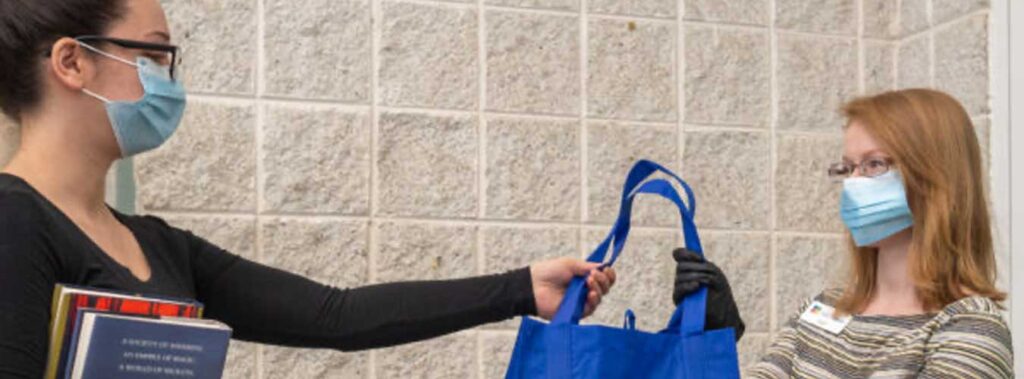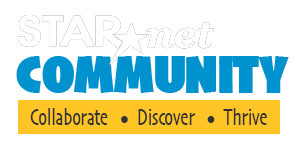Best Practices for Take & Make Activities

Tips & Tricks for Take & Makes to Compliment Virtual Programming
By Atlas Logan, Gwinnett Public Library
Many libraries have turned to Take & Make activity kits as a fun, engaging way to still meet community needs while keeping things safe during the pandemic. While fairly straightforward, there are still a few things to keep in mind when planning, preparing, and distributing Take & Make kits, especially if you are hoping to use them as a compliment to your virtual programming. When coming up with your programming and kits ideas, it helps to be familiar with the resources available for activity ideas that are both enjoyable and engaging. For example, one of my absolute favorites is the STAR Library Network’s online STEM Activity Clearinghouse! This easy to navigate website allows you to search by topic, audience, and content level, providing quick access to high quality STEM activities that are appropriate for library use. They even have a collection of ideas specifically dedicated to the creation of Take & Makes!
To get started, you’ll want to think a bit about your target audience. Be sure that the activities and instructions included in your kits are appropriate for the age group. You might also consider the types of things your target audience is typically interested in. For younger children, you might want to think about any particular developmental skills that they might need to build. Perhaps you could make components of the kit an activity that builds social skills by collaborating with others, or make it a multigenerational effort by encouraging them to work with a parent or grandparent. You could consider creating themed kits for a variety of age groups, or just one that encourages them to work together. Regardless of what you decide, you’ll also want to ensure that your Take & Make kit clearly ties into your virtual program’s topic or theme so that viewers feel engaged with your subject and invested in the activity.
Perhaps the most helpful thing that I’ve learned over time is to keep things simple. Sticking with activities that only require a few materials will keep the overall cost down and save time when it comes to assembling the kits. That being said, be sure to provide as much as you can whenever possible so that your participants can complete the activity without needing to supply additional materials. If auxiliary supplies are needed to complete the craft, make sure that they are common household items such as paper, crayons, etc. Your instructions for completing the activity should be simple enough that your target audience will be able to understand them. While most young participants will have the assistance of a parent or guardian, some may not due to various circumstances. If language may be a barrier in your community, it may be nice to practice inclusion by offering the instructions in the languages needed for your area in addition to English. Regardless, your instruction needs to be easy to understand since the participants will be on their own without quick access to library staff for questions and/or guidance.
Take & Make kits can be very popular but it can take a little bit of work to get the word out if this is a new endeavor within your community. A few tips for distribution include picking a regular day of the week/month to start distributing kits so that customers know when they can come to the library for new content (kind of like a regularly scheduled storytime event). It also might be helpful to include a range of offerings (either all at once or over time); for example, art, science, technology, etc. Next, market how easy the kits are! No need for busy parents to think of ideas and purchase supplies… all the essentials are provided! Get parents excited about your kits and they are sure to help you spread the word. Finally, you may want to consider what to do if your demand outweighs the supply. How will you approach this situation if it arises? First come, first served? Registration? It may be helpful to offer an online link to instructions and/program supplies for those who still want to complete the kit and are willing to provide the supplies themselves. You may even consider curating a “gallery” of past kits that your patrons can browse for ideas. Be sure to provide an estimated cost on the supply list so people can know what to expect!
So, you’ve created some Take & Make activity kits based on your virtual programming and they are a hit! Now what? You may think the work is finished but there are still things that can be done to increase engagement with your audience and community. Is there some way that you can get them to engage with the library after completing the kit? For example, you could create a hashtag for your kit and ask participants to share their final product via social media. Feel free to encourage them to share pictures/video of them working on the kits. If the kit corresponds to a virtual program, ask that they comment in the chat or on the posting. Ask them to complete a feedback survey to improve future kit offerings from your library. There is no shortage of ways that you can bring things full circle!
While Take & Make kits are undoubtedly fun and easy, there are plenty of things to consider if you want to maximize your impact and engagement with your community. If the cost is a barrier for your library, you can even look to grants to help cover the cost of supplies! If done well, Take & Make kits can make your life easier and help your library to continue meeting community needs in a way that is safe and enjoyable for all involved. Don’t be afraid to get out there and get creative!





Responses